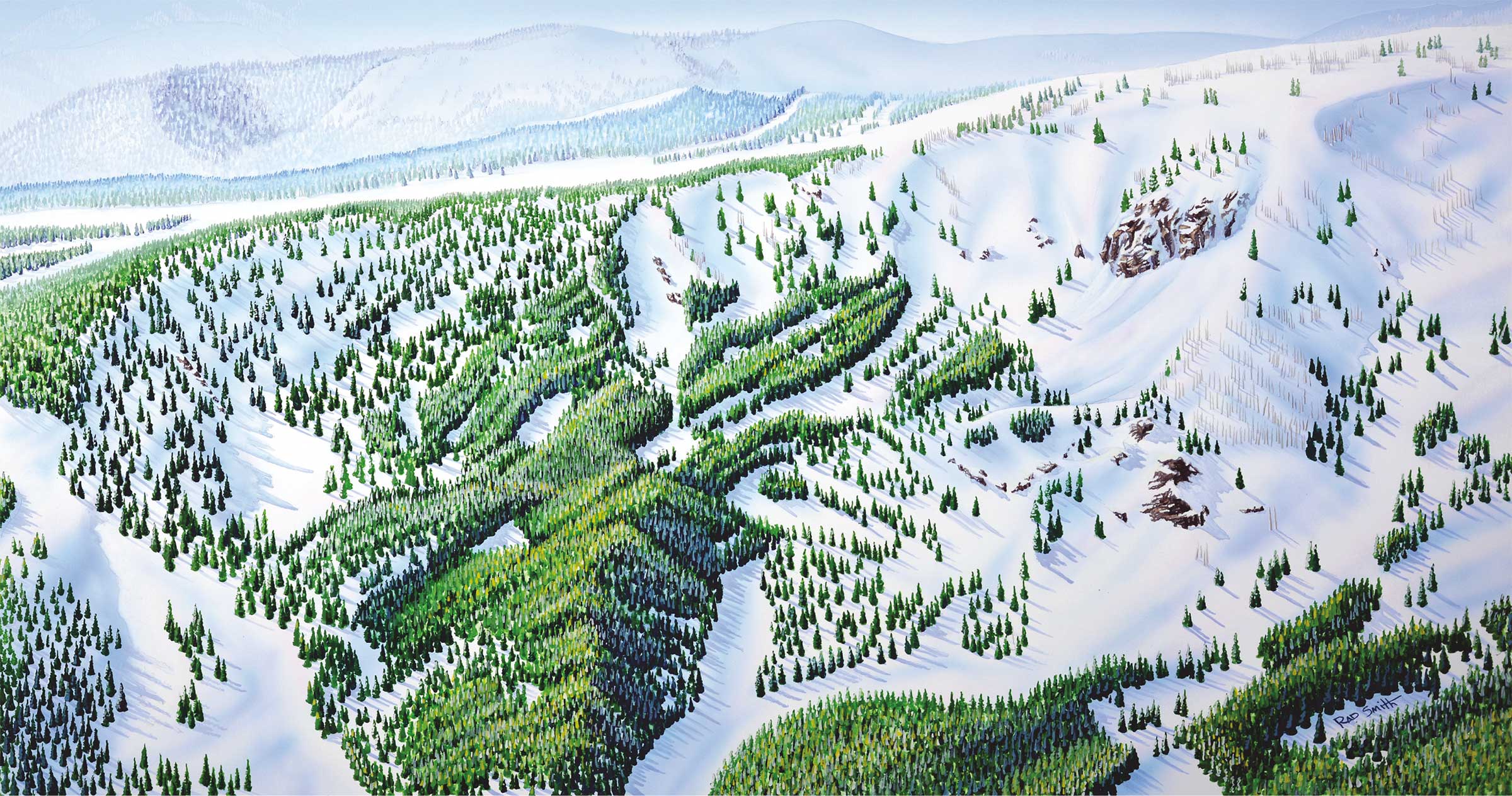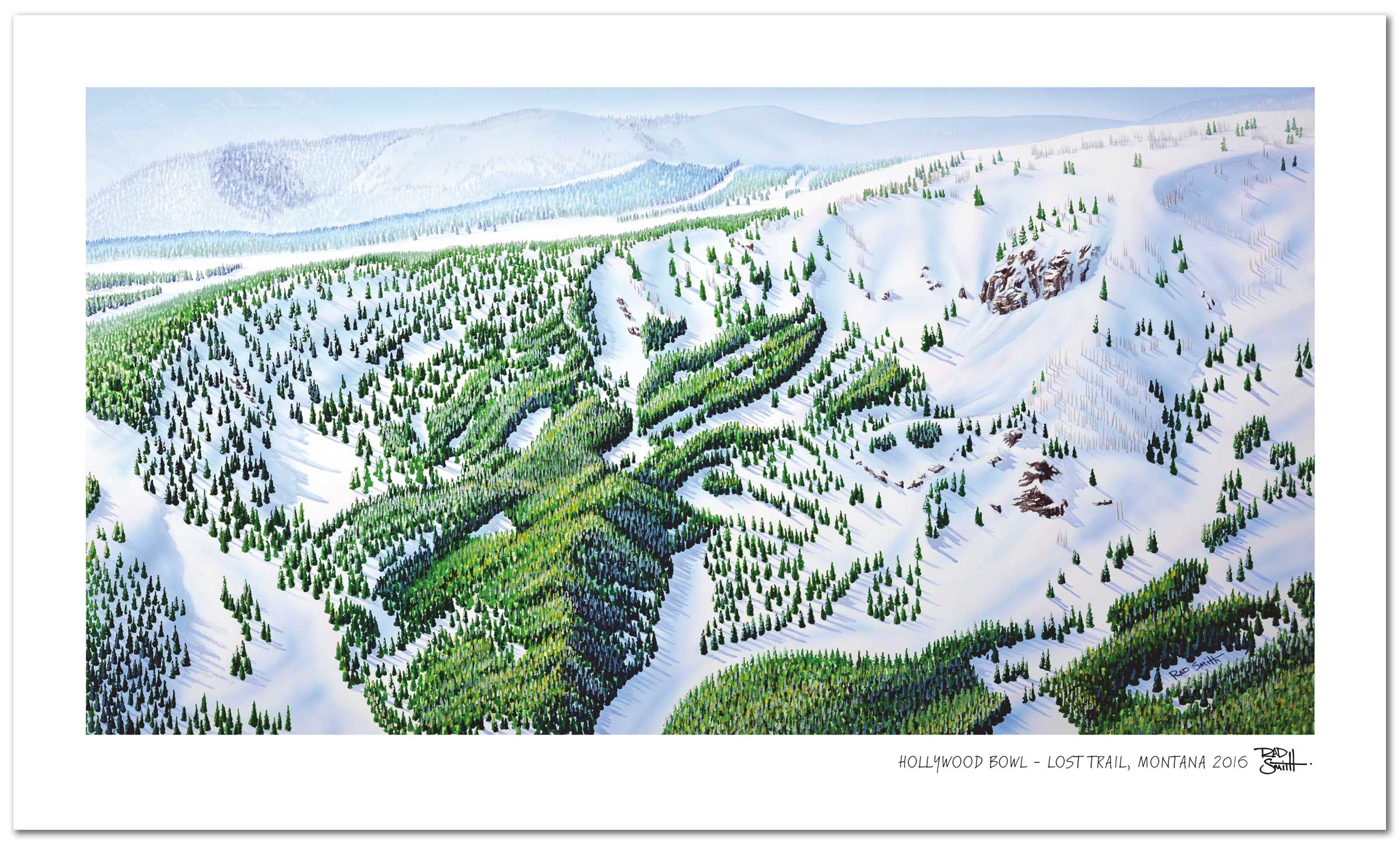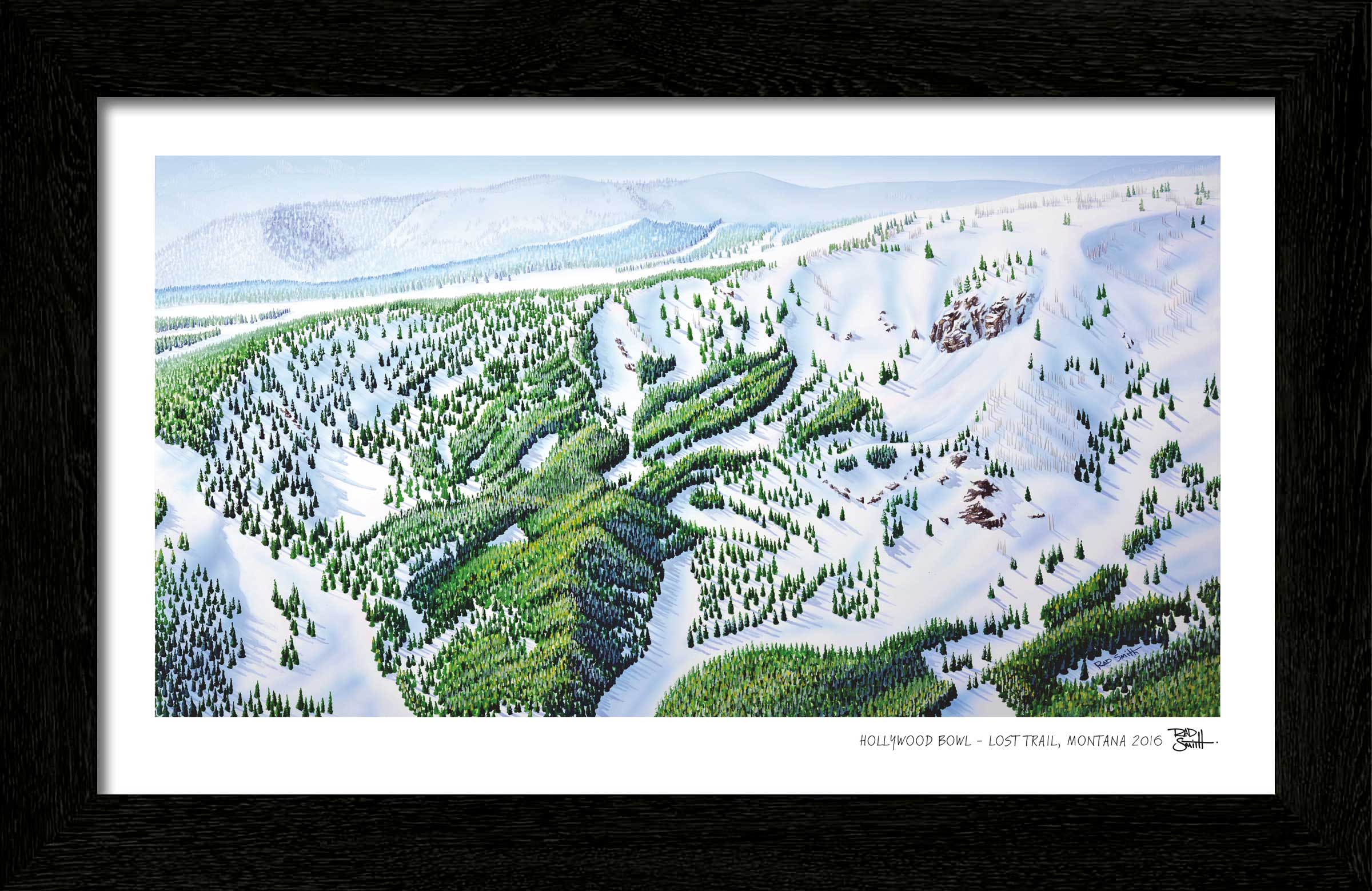Lost Trail - Hollywood Bowl Ski Map
Each piece is printed using the highest-quality materials and printing methods:
- Paper type: 100% acid-free FSC-certified archival paper
- Paper thickness: 230gsm
- Printing: Canon 12 color giclee printing
Framing
Our custom black wooden print frames feature a deep, squared profile to showcase Smith’s timeless work. Frames feature a EV filtering non-glare acrylic front plus acid-free foamcore backing.
FRAME WIDTHS:
- All prints: 1-1/4" inches wide, 13/16" deep
Canvas
Available as a large size gallery canvas. Each canvas is hand stretched over an internal frame and comes ready to hang with a pre-installed hanging wire.
Painted in 2016
Rad Smith completed his third winter trail map project with this inset of the White House zone and Hollywood Bowl for the Lost Trail Ski Area. Smith skied the resort a number of days with his family to inform his approach and accurately represent the terrain.
Lost Trail tops the Continental Divide on Highway 93 where Montana and Idaho share a border. This remote resort has a proud community-minded legacy of providing affordable skiing for over 80 years. In contrast to large, commercialized resorts, Lost Trail is a humble hill with excellent snow, few amenities, and a friendly atmosphere. The resort is renowned for “Powder Thursdays” as it only operates Thursday through Monday. The playful terrain, pillows, powder snow, and cliff drops makes it a favorite among locals and those who commit to experiencing this hidden gem.
Timeless art for your home
Each piece is printed using the highest-quality materials and printing methods:
- Paper type: 100% acid-free FSC-certified archival paper
- Paper thickness: 230gsm
- Printing: Canon 12 color giclee printing
Finishing Touches
Framing
Our custom black wooden print frames feature a deep, squared profile to showcase Smith’s timeless work. Frames feature a EV filtering non-glare acrylic front plus acid-free foam-core backing.
FRAME WIDTHS:
- All prints: 1-1/4" inches wide, 13/16" deep
Canvas
Available as a large size gallery canvas. Each canvas is hand stretched over an internal frame and comes ready to hang with a pre-installed hanging wire.
Rad Smith
With a background in illustration and graphic design, Rad has recently shifted his creative energy towards painting hand-crafted ski maps. His work builds upon the legacy of the legedary ski map artist James Niehues, a tradition that began with Hal Shelton after World War II followed by Bill Brown in the 1970s and early 1980s.


